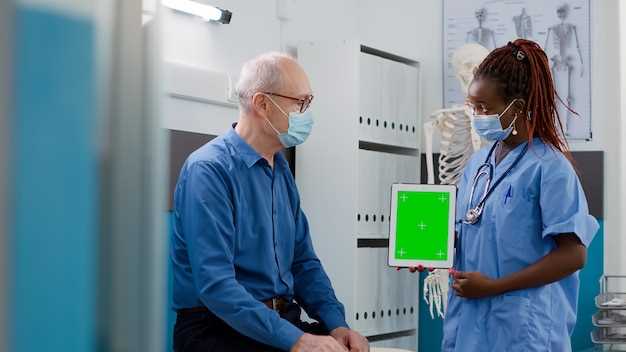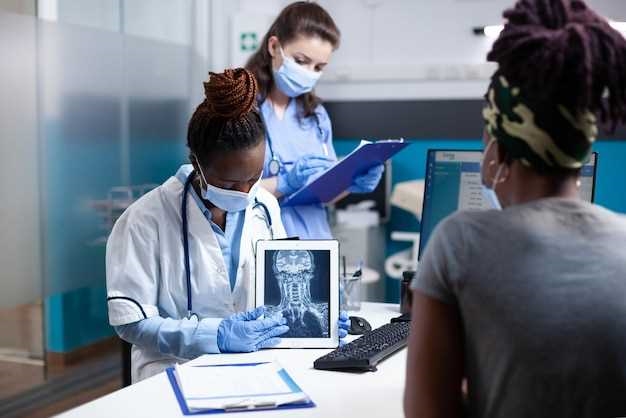
With the ever-evolving landscape of healthcare, it is imperative to explore groundbreaking advancements that are reshaping the way medical services are accessed and delivered. In a country like Haiti, where access to quality healthcare has been a persistent challenge, innovative solutions are emerging to bridge the gap and bring hope to those in need.
Amidst the myriad of obstacles faced by the healthcare system in Haiti, a wave of transformative initiatives is revolutionizing the way medical assistance is provided. These pioneering efforts are not only improving the availability of essential healthcare services but also empowering individuals to take control of their own well-being.
Through the integration of cutting-edge technologies and the implementation of novel strategies, healthcare providers in Haiti are embracing a new era of accessibility. By leveraging the power of telemedicine, for instance, medical professionals can now remotely diagnose and treat patients, eliminating the barriers of distance and limited resources.
Furthermore, the advent of mobile health applications has opened up a world of possibilities for individuals seeking medical guidance. With just a few taps on their smartphones, Haitians can now access a wealth of information, connect with healthcare professionals, and even schedule appointments, all from the comfort of their own homes.
As the healthcare landscape in Haiti continues to evolve, it is crucial to shed light on these remarkable innovations that are transforming the lives of countless individuals. By enhancing accessibility to medical services, these advancements are not only saving lives but also fostering a sense of empowerment and hope for a healthier future.
Telemedicine: Bridging the Gap in Rural Areas
Rural areas often face challenges when it comes to accessing quality healthcare services. The lack of medical facilities and healthcare professionals in these areas can result in limited access to medical care, leading to disparities in health outcomes. However, telemedicine has emerged as a promising solution to bridge this gap and provide healthcare services remotely.
Enhancing Healthcare Access through Telemedicine

Telemedicine, also known as telehealth, refers to the use of telecommunications technology to provide healthcare services remotely. It allows patients in rural areas to connect with healthcare professionals located in urban centers, eliminating the need for long-distance travel and reducing the barriers to accessing medical care.
Improved Healthcare Delivery: Telemedicine enables healthcare professionals to remotely diagnose and treat patients, reducing the need for in-person visits. Through video consultations, doctors can assess patients’ conditions, provide medical advice, and prescribe necessary medications. This not only saves time and money for patients but also improves the efficiency of healthcare delivery.
Specialist Consultations: Rural areas often lack specialized healthcare services, making it challenging for patients to receive timely and appropriate care. Telemedicine allows patients to connect with specialists located in urban areas, enabling them to access specialized consultations without the need for travel. This ensures that patients in rural areas receive the same level of care as those in urban centers.
Overcoming Challenges and Ensuring Quality Care
While telemedicine offers significant benefits, there are challenges that need to be addressed to ensure its successful implementation in rural areas. One of the key challenges is the availability of reliable internet connectivity, as rural areas may have limited access to high-speed internet. Efforts should be made to improve internet infrastructure to enable seamless telemedicine services.
Additionally, healthcare professionals in rural areas may require training and support to effectively utilize telemedicine technology. Training programs can equip them with the necessary skills to conduct remote consultations and ensure the delivery of quality care.
In conclusion, telemedicine has the potential to bridge the gap in healthcare access in rural areas. By leveraging telecommunications technology, it enables patients to connect with healthcare professionals remotely, improving healthcare delivery and providing access to specialized consultations. However, addressing challenges such as internet connectivity and providing training to healthcare professionals is crucial for the successful implementation of telemedicine in rural areas.
Mobile Clinics: Bringing Healthcare to Remote Communities
Bringing healthcare to remote communities is a crucial aspect of improving access to medical services. In order to reach these underserved areas, innovative solutions such as mobile clinics have been implemented. Mobile clinics are vehicles equipped with medical equipment and staffed with healthcare professionals, providing essential healthcare services directly to the communities in need.
Benefits of Mobile Clinics
- Increased accessibility: Mobile clinics bridge the gap between remote communities and healthcare facilities, ensuring that individuals who are unable to travel long distances can still receive medical attention.
- Timely healthcare delivery: By bringing healthcare services directly to the communities, mobile clinics eliminate the need for individuals to wait for appointments or travel long distances, ensuring timely access to medical care.
- Customized healthcare services: Mobile clinics can be tailored to meet the specific healthcare needs of the communities they serve. This includes providing preventive care, vaccinations, basic medical treatments, and health education.
- Community engagement: Mobile clinics foster community engagement by establishing a direct connection between healthcare providers and the communities they serve. This helps build trust, improve health literacy, and encourage individuals to seek regular medical care.
Challenges and Solutions
While mobile clinics have proven to be effective in reaching remote communities, they also face certain challenges. Limited resources, including medical supplies and personnel, can hinder the scope of services provided. Additionally, the lack of infrastructure and difficult terrain in remote areas can pose logistical challenges.
To overcome these challenges, partnerships between healthcare organizations, government agencies, and non-profit organizations are crucial. These collaborations can help secure funding, acquire necessary resources, and coordinate logistics effectively. Furthermore, leveraging technology, such as telemedicine, can enhance the capabilities of mobile clinics by enabling remote consultations and access to specialized medical expertise.
In conclusion, mobile clinics play a vital role in bringing healthcare to remote communities. By increasing accessibility, providing timely care, and engaging with communities, mobile clinics contribute to improving the overall health and well-being of underserved populations.
Community Health Workers: Empowering Local Healthcare Providers
Community Health Workers play a vital role in enhancing the capabilities of local healthcare providers, fostering a stronger and more accessible healthcare system. These dedicated individuals serve as a bridge between the community and formal healthcare institutions, ensuring that essential medical services reach those in need. By empowering community health workers, we can effectively address the healthcare challenges faced by underserved populations.
Empowering Local Expertise
Community Health Workers possess a deep understanding of the local culture, language, and customs, enabling them to establish trust and rapport with community members. Their unique position allows them to effectively communicate health information, educate individuals on preventive measures, and promote healthy behaviors. By leveraging their local expertise, community health workers become invaluable resources in improving healthcare access and outcomes.
Enhancing Healthcare Delivery
Community Health Workers act as a vital link between healthcare providers and the community, facilitating the delivery of medical services. They assist in identifying individuals in need of healthcare, providing referrals, and ensuring follow-up care. Through their efforts, community health workers help reduce barriers to healthcare access, such as language barriers, lack of transportation, and limited awareness of available services.
Building Stronger Communities
Community Health Workers not only address immediate healthcare needs but also contribute to the overall well-being of the community. They promote health education, disease prevention, and healthy lifestyle choices, empowering individuals to take control of their own health. By fostering a sense of community ownership and responsibility, community health workers play a crucial role in building healthier and more resilient communities.
Collaboration and Support
Empowering community health workers requires collaboration and support from various stakeholders, including healthcare institutions, government agencies, and non-profit organizations. By providing training, resources, and recognition, we can ensure that community health workers have the necessary tools to fulfill their roles effectively. Through collective efforts, we can strengthen the impact of community health workers and create a sustainable healthcare system that benefits all.
In conclusion, community health workers play a pivotal role in empowering local healthcare providers and improving access to medical services. Their unique position, local expertise, and dedication contribute to the overall well-being of underserved populations. By recognizing and supporting the vital work of community health workers, we can create a more equitable and inclusive healthcare system for all.
Electronic Health Records: Enhancing Efficiency and Patient Care
In the realm of modern healthcare, the utilization of electronic health records (EHRs) has emerged as a pivotal innovation, revolutionizing the way medical information is stored, accessed, and shared. This section explores the profound impact of EHRs on enhancing efficiency and improving patient care, fostering a more streamlined and comprehensive approach to healthcare delivery.
Efficiency: Electronic health records have significantly transformed the way healthcare providers manage patient information. Gone are the days of cumbersome paper-based records, as EHRs offer a digital platform that allows for seamless data entry, retrieval, and analysis. By eliminating the need for manual paperwork and reducing administrative tasks, healthcare professionals can allocate more time to direct patient care, resulting in increased efficiency and productivity.
Patient Care: The implementation of electronic health records has revolutionized the quality and coordination of patient care. With EHRs, healthcare providers have instant access to comprehensive patient histories, including medical conditions, allergies, medications, and previous treatments. This wealth of information enables healthcare professionals to make well-informed decisions, tailor treatment plans, and provide personalized care. Moreover, EHRs facilitate seamless communication and collaboration among healthcare teams, ensuring that all providers involved in a patient’s care are well-informed and can work together to deliver optimal outcomes.
Enhanced Data Analysis: Electronic health records enable advanced data analysis, offering valuable insights into population health trends, disease patterns, and treatment outcomes. By aggregating and analyzing large volumes of patient data, healthcare organizations can identify areas for improvement, implement evidence-based practices, and enhance healthcare delivery on a broader scale. This data-driven approach not only improves individual patient care but also contributes to the advancement of medical research and the development of innovative treatment strategies.
Privacy and Security: While the benefits of electronic health records are undeniable, ensuring the privacy and security of patient information is of paramount importance. Robust security measures, such as encryption, access controls, and regular audits, are implemented to safeguard sensitive medical data from unauthorized access or breaches. Strict adherence to privacy regulations and ethical guidelines is essential to maintain patient trust and confidence in the electronic health record system.
In conclusion, electronic health records have revolutionized healthcare by enhancing efficiency, improving patient care, enabling advanced data analysis, and ensuring privacy and security. The adoption of EHRs has paved the way for a more interconnected and patient-centric healthcare system, ultimately leading to better health outcomes for individuals and communities alike.
Drone Delivery: Overcoming Infrastructure Challenges
In the context of improving access to medical services in Haiti, one innovative solution that has emerged is the use of drone delivery. This method aims to overcome the challenges posed by the country’s limited infrastructure, allowing for the efficient and timely transportation of medical supplies and equipment to remote and hard-to-reach areas.
Enhancing Accessibility
Drone delivery offers a unique opportunity to enhance accessibility to medical services in Haiti. By bypassing the limitations of traditional transportation methods, such as poor road conditions and limited healthcare facilities, drones can swiftly deliver essential medical supplies to areas that would otherwise be difficult to reach. This technology has the potential to bridge the gap between healthcare providers and patients, ensuring that even the most remote communities have access to life-saving treatments and care.
Overcoming Infrastructure Challenges
The use of drones in healthcare delivery in Haiti addresses the infrastructure challenges that have long hindered the provision of medical services. With its rugged terrain and inadequate road networks, reaching remote areas has always been a significant obstacle. However, drones can navigate these obstacles effortlessly, delivering medical supplies directly to the intended destinations. This not only saves time but also reduces the risk of damage or spoilage of essential supplies during transportation.
Furthermore, drone delivery eliminates the need for costly and time-consuming infrastructure development projects. Instead of investing in building new roads or healthcare facilities, resources can be redirected towards improving the quality of medical services and training healthcare professionals.
In conclusion, drone delivery presents a promising solution to overcome infrastructure challenges in improving access to medical services in Haiti. By leveraging this innovative technology, healthcare providers can ensure that no community is left behind, and that every individual has access to the medical care they need, regardless of their geographical location.
Public-Private Partnerships: Strengthening Healthcare Systems
Collaboration between public and private sectors plays a crucial role in enhancing healthcare systems and ensuring accessible and quality medical services. By fostering partnerships between government entities, non-profit organizations, and private companies, innovative solutions can be developed to address the challenges faced by healthcare systems worldwide.
1. Advantages of Public-Private Partnerships
Public-private partnerships bring together the expertise, resources, and networks of both sectors, creating a synergy that can lead to significant improvements in healthcare delivery. These collaborations enable the sharing of knowledge, technology, and best practices, resulting in more efficient and effective healthcare systems.
2. Examples of Successful Public-Private Partnerships
- Collaboration between pharmaceutical companies and government health agencies to develop and distribute affordable medications, particularly in underserved areas.
- Partnerships between healthcare providers and technology companies to implement telemedicine solutions, enabling remote consultations and diagnosis, especially in rural regions.
- Joint initiatives between non-profit organizations and private hospitals to establish mobile clinics and outreach programs, reaching marginalized communities with essential healthcare services.
These examples highlight the diverse range of public-private partnerships that have been instrumental in strengthening healthcare systems globally. By leveraging the unique strengths of each sector, these collaborations have made significant strides in improving access to medical services, enhancing healthcare infrastructure, and promoting health equity.



